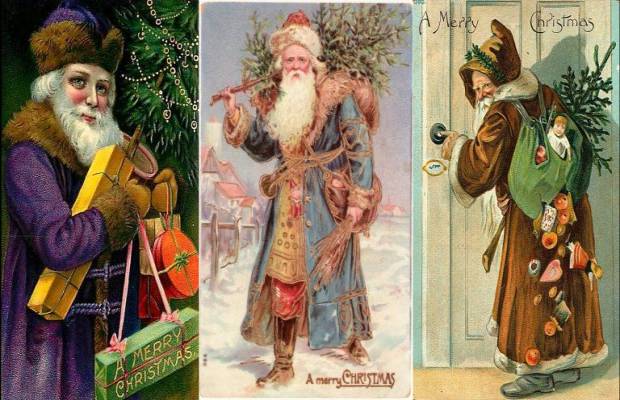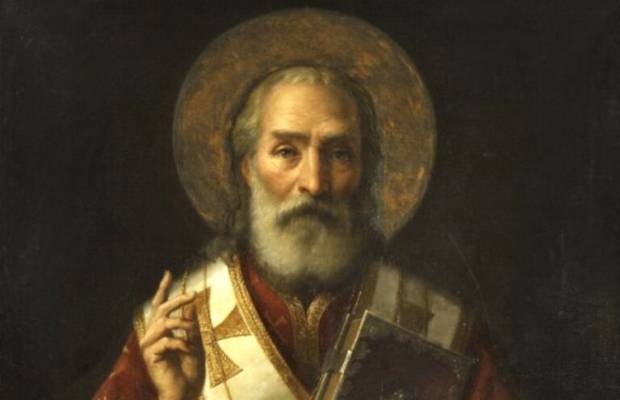The History Of Father Christmas And How He Came To Be

Father Christmas, known as Santa Claus in America, is a legendary figure deeply rooted in Western Christian culture. Tradition holds that he delivers gifts on Christmas Eve with the assistance of Christmas elves crafting toys in his North Pole workshop and flying reindeer pulling his sleigh through the night. The origin of Father Christmas can be traced back to the 16th century during the reign of Henry VIII in England.
During this period, Father Christmas was depicted as a robust figure adorned in green or scarlet robes lined with fur. His role was emblematic of spreading good cheer during Christmas, fostering an atmosphere of peace, joy, and revelry. In its early iterations, Father Christmas was primarily associated with adult feasting and merry-making, lacking a specific connection to children, gift-giving, nocturnal visits, stockings, chimneys, or reindeer.
The evolution of Father Christmas took a significant turn during Victorian times when Christmas celebrations became more child-centric and family-oriented. Father Christmas underwent a transformation, becoming a harbinger of gifts, aligning with the emerging traditions of presents, nocturnal visits, stockings, chimneys, and the iconic flying reindeer.
The rich history of Father Christmas spans centuries, amalgamating diverse cultural and religious influences. The modern portrayal of Santa Claus draws inspiration from various sources, including folklore traditions surrounding Saint Nicholas, the English embodiment of Father Christmas, and the Dutch figure of Sinterklaas. These elements converged over time, shaping the contemporary image of Santa Claus as a benevolent gift-bringer associated with the festive spirit of Christmas.
Father Christmas has evolved from a figure of adult merriment in 16th-century England to the beloved Santa Claus associated with bringing joy and gifts to children worldwide. The amalgamation of cultural and religious influences has contributed to the rich tapestry of this legendary character, whose enduring presence continues to symbolize the magic and generosity of the holiday season.
Saint Nicholas

READ ALSO » Top 10 Countries That Celebrate Christmas In January
Saint Nicholas, a 4th-century Greek Christian bishop in the Roman Empire, earned a reputation for his remarkable generosity and compassion, particularly towards children and the impoverished. Renowned for his unwavering dedication to Christianity, historical accounts depict Saint Nicholas as a deeply religious individual who embarked on a pilgrimage to Egypt and Palestine during his youth. Following his return, he ascended to the position of Bishop of Myra.
One of the most famous episodes from Saint Nicholas's life recounts his intervention to rescue three girls from a dire fate. He purportedly thwarted their forced entry into prostitution by discreetly delivering a sack of gold coins through their window on three consecutive nights, enabling their father to pay a dowry for each of them. Beyond this iconic tale, numerous accounts highlight Saint Nicholas's altruism, including the distribution of his inherited wealth and his travels to aid the impoverished and sick throughout the countryside.
As the years passed, Saint Nicholas's benevolence became legendary, earning him the titles of the protector of children and sailors. His virtuous deeds resonated across various cultures, leading to the annual celebration of his legend on the anniversary of his death, observed every December 6. This commemorative day evolved into a festive occasion for gift-giving in many European countries. A prevalent tradition involved children leaving their shoes out on the eve of the feast, with Saint Nicholas filling them with small gifts and treats, further solidifying his enduring legacy as a symbol of compassion and generosity.

The introduction of St. Nicholas into American popular culture occurred in the late 18th century. The name Santa Claus originated from Nick's Dutch nickname, Sinter Klaas, a shortened version of Sint Nikolaas (Dutch for Saint Nicholas). This Dutch moniker, Sinterklaas, underwent Anglicization, leading to the adoption of Santa Claus. The term was first used in the U.S. press in 1773.
The American portrayal of Santa Claus underwent significant changes, losing the traditional bishop's apparel. Initially depicted as a stout Dutch sailor with a pipe, clad in a green winter coat, Santa Claus took on a distinctive appearance in the evolving cultural landscape.
The transformation of Santa Claus into the iconic figure recognized today is often attributed to Washington Irving and other early 19th-century New Yorkers. Their intention was to temper the exuberant Christmas celebrations of the time and redirect the focus to family-oriented festivities. In 1809, Washington Irving contributed to popularizing Sinter Klaas stories by referring to St. Nicholas as the patron saint of New York in his book, The History of New York.
It's essential to note that Irving's depiction of Santa Claus in his book was satirical and largely a humorous invention, poking fun at Dutch culture in New York. His interpretation of Santa Claus was part of a broader movement to mitigate the increasingly raucous Christmas celebrations of the era. This period saw a rise in disorderly activities during Christmas, including aggressive home invasions, significant premarital sex, and public displays of sexual deviancy. Irving and others aimed to rein in these wild festivities and promote a more restrained and family-centric approach to Christmas celebrations in America.
READ ALSO » Top 10 Countries That Don't Celebrate Christmas In The World
The mythical character known as Santa Claus emerged from a fusion of early representations of gift-givers in Church history, folklore, particularly that of St. Nicholas, and the English character Father Christmas. This amalgamation formed the basis of the legendary figure recognized in the broader English-speaking world.

The American myth of Santa Claus gained popularity in England during the 1850s, influencing the attributes of Father Christmas. While the physical appearance of Father Christmas varied, his costume gradually standardized. Illustrations often depicted him carrying a holly crown, later replaced by a hood. By the 1880s, new customs had taken root, with Santa Claus becoming synonymous with Father Christmas. Illustrations of this figure showcased a long red hooded gown trimmed with white fur.
Despite these changes, distinctions between Father Christmas and Santa Claus persisted, and even in the 1890s, examples of the old-style Father Christmas without American features could still be found. The celebration of Father Christmas in England, originally associated with the feast day of Saint Nicholas on December 6, shifted to December 25 to align with Christmas Day.
As the 20th century dawned, the differences between Father Christmas and Santa Claus gradually diminished. By the early years of the 20th century, most distinctions had faded away, and modern dictionaries now consider the terms Father Christmas and Santa Claus to be synonymous, reflecting the evolution and convergence of these iconic figures in English cultural tradition.
